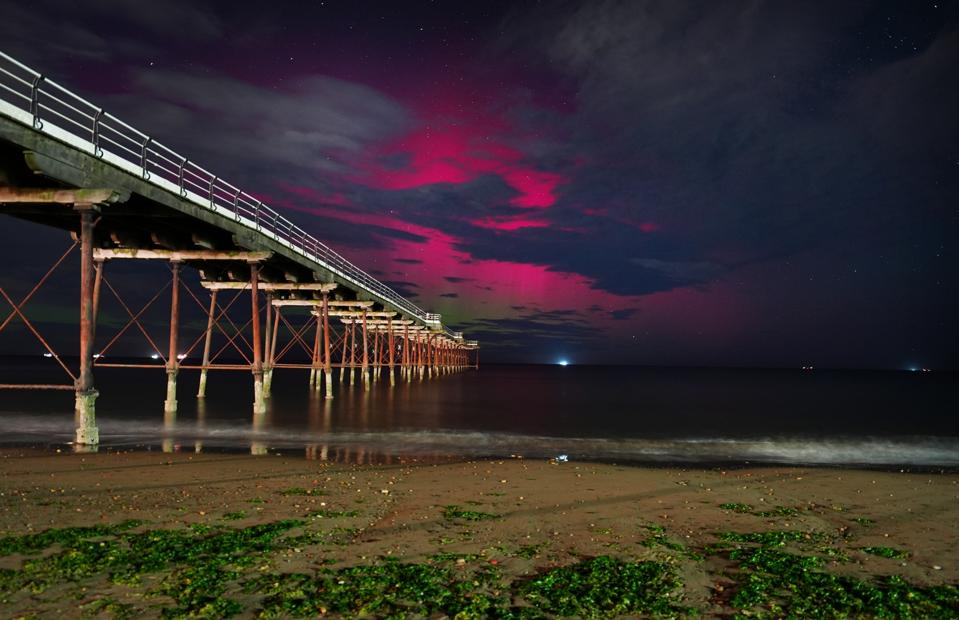The Northern Lights erupted across the night sky last night for skywatchers in northern parts of the U.S., Canada and northern Europe. Triggered by a powerful solar flare on Aug. 30, the aurora painted the night sky in vibrant curtains of red and green.
It may happen again on Sept. 2–3, 2025, with early forecasts indicating another burst of activity is possible.
Auroras occur when charged particles from the sun accelerate down Earth’s magnetic field lines and collide with molecules high in the atmosphere. That interaction produces glowing arcs and rays of green and red light.
The possibility of aurora borealis displays at more southerly latitudes than usual is the result of heightened solar activity. Although the sun may now be past its official solar maximum peak in late 2024, experts believe this cycle could produce enhanced auroral storms until at least 2027. That means the spectacle witnessed last night is unlikely to be the last.
In places like Nebraska, Iowa, and Illinois — locations rarely blessed with sightings of auroras — northern skies featured a sudden colorful light show more often reserved for Alaska, far north Canada and northern Scandinavia.
NOAA’s Space Weather Prediction Center had forecast heightened activity after a massive solar flare on Aug. 30 launched a coronal mass ejection toward Earth at more than three million miles per hour. When those charged particles slammed into Earth’s magnetic field, they set off the widespread auroral storm.
The September display follows a pattern seen during solar maximum, the most active phase of the sun’s 11-year cycle. With complex sunspot regions facing Earth, the storm delivered one of the most widespread auroral events since activity peaked in late 2024.
There could be more to come. The longer nights in September marks the beginning of the Northern Hemisphere’s aurora viewing season, and last night’s show served as a reminder of what may be ahead. The weeks around the autumnal equinox on Sept. 22 are often favorable for auroras, thanks to what scientists call the Russell–McPherron effect.
First described in 1972 by UCLA researchers, the effect explains why geomagnetic disturbances often intensify around the equinoxes. At these times, Earth’s axial tilt aligns in such a way that the solar wind can connect more efficiently with the planet’s magnetic field. This alignment can open cracks in the magnetosphere, allowing more solar particles to stream in and trigger brighter, more frequent auroras.
That equinox effect often comes with a lag, with early October one of the best windows for auroral storms at mid-northern latitudes. That means skywatchers across the northern U.S. and Europe may not have to wait long for another chance to see a spectacular display.
Wishing you clear skies and wide eyes.

